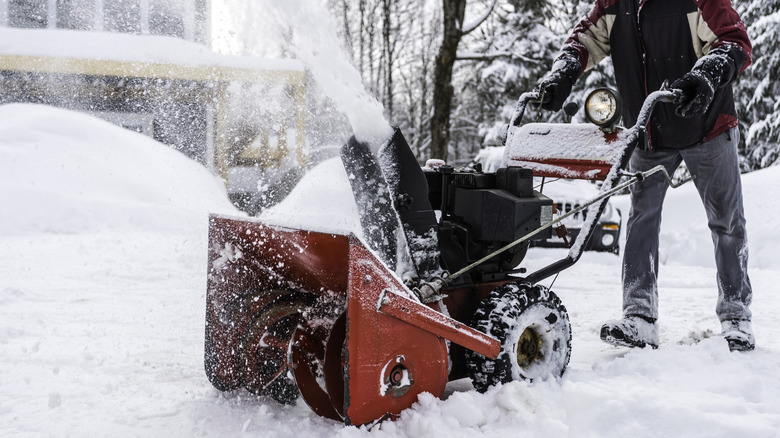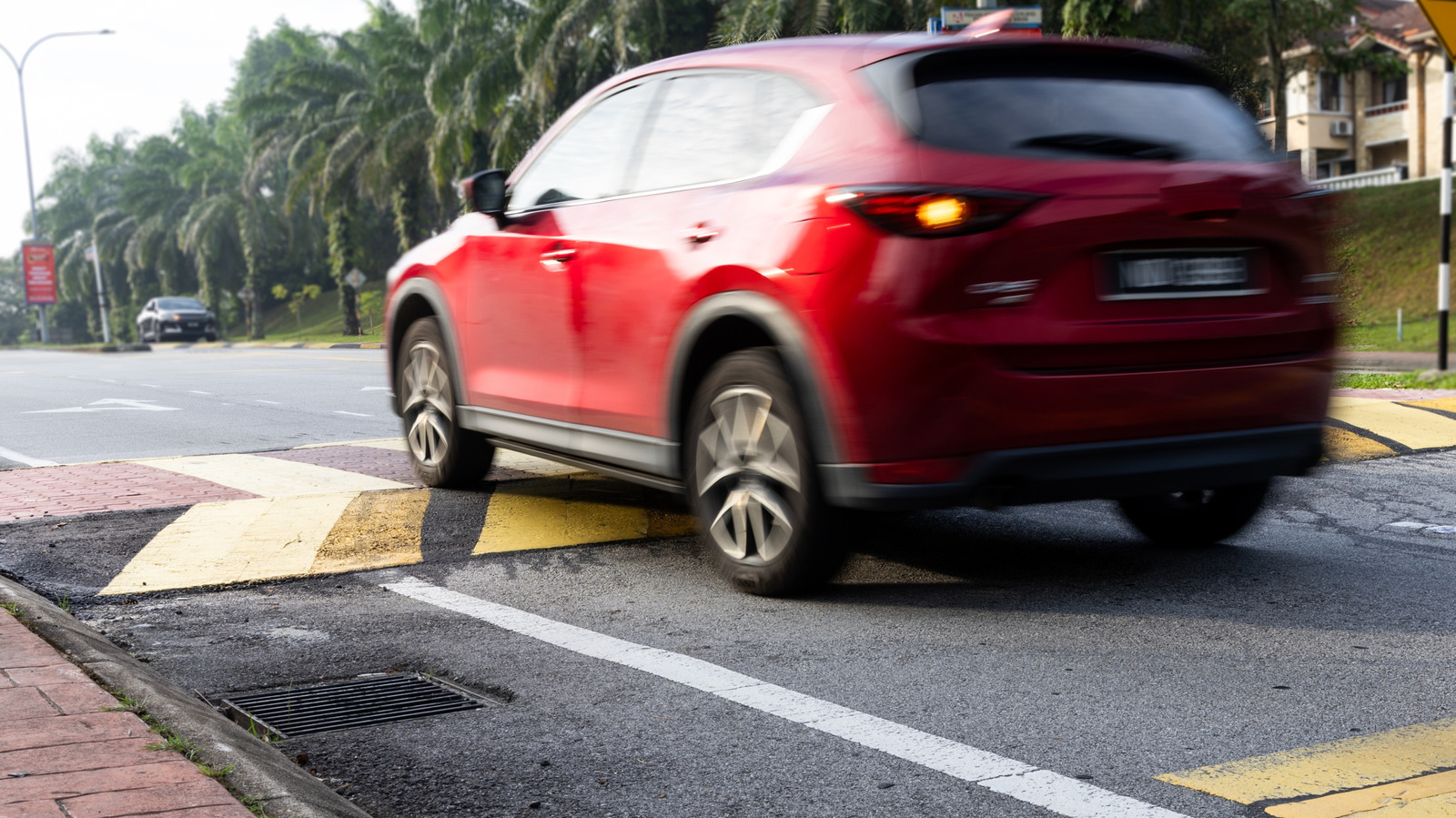 Onfokus/Getty Images
Onfokus/Getty Images
We may receive a commission on purchases made from links.
Picture this: You're a new homeowner and winter is fast approaching. You've purchased a snow blower, new gloves, and maybe a pair of snow pants, and you feel ready for that first significant snow fall of the year. The storm hits and you gear up, only for your new neighbor to get a face full of snow on your first pass. Where did you go wrong?
You'll probably be able to smooth things over with your annoyed neighbor by putting more consideration into where you throw the snow. But in addition to avoiding people, cars, and even pets, there's more that goes into safely and correctly operating a snow blower. Before that first snow even hits, Bradley Ford over at Popular Mechanics recommends that you get to know your new machine, especially if you've never used one before. It's a bit more complicated than a shovel, and you'll want to learn how to turn it on and off, and read the owner's manual, so you know how to operate, store, and maintain this new tool.
Wearing a coat and hat may seem obvious, but you also want to wear boots with grippy treads. Gloves are a must, but make sure to select a pair that allow you to maintain dexterity, as you'll likely be pulling levers or pressing buttons. You should also wear a pair of goggles or safety glasses to protect yourself not only from flying snow, but sticks or other debris that may get tossed by the machine. Once you're geared up and the flakes are falling, you're ready to take that first pass.
Take it slow and steady
 Goldyrocks/Getty Images
Goldyrocks/Getty Images
If more than just a few inches of snow is in the forecast, you may not want to wait until the end of the storm to get to work. That's because, as outlined on a Home Depot guide, you could struggle to clear more than a few inches at a time. While this depends on the capacity of your snow blower, it will be especially true if the snow is wet and heavy. Bradley Ford, of Popular Mechanics, also advises against walking or driving on the snow first, as this will pack it down and make it harder to clear.
With those things in mind, it's time to get blowing. Before you begin, position the discharge chute, which tosses the snow, in the appropriate direction. Start in the center of your path, throwing to the closest side as your path widens. If the snow is deep, position the snow blower so it doesn't collect it all at once, and make several passes over the same path.
If the forecast calls for it, be sure to clear the snow before the top layer turns to ice, which makes it much harder to remove. Walk slowly and steadily to avoid clogs, and if snow or another object gets jammed in the snow blower, never use your hands to clear it out. Turn off the machine, make sure all parts have stopped moving, and use a broom handle or a stick to remove the clog. According to Ford, some machines may come with a special tool just for this purpose. Finally, remember that while easier than shoveling, snow blowing can still be strenuous, to be sure to stop and ask for help if you don't feel well.
Keep up maintenance for your snow blower before, during, and after snow season
 melissamn/Shutterstock
melissamn/Shutterstock
According to the Home Depot guide, snow blowers need to be maintained both before and during the winter months, as well as stored properly after. Before the first snow storm, you'll want to check the oil level in your gas snow blower; check that the cord is in good shape on your electric machine; or be sure the battery in your cordless version is charging well. Check your owner's manual for other recommendations, such as lubricating moving parts.
During the winter months, Home Depot recommends that you use fuel stabilizer in your gas-powered snow blower to prevent clogs in the fuel system. You should also dry the snow blower after each use to help keep any metal components from rusting and tighten loose bolts. After the last snow of the year, empty the fuel tank and follow any suggestions for storage found in the guidelines.
You may want to treat the metal with a rust prevention spray, and, if possible, store the snow blower inside. If you're shopping for a new snow blower, carefully research the different brands and types to find a machine that best suits your needs. When purchased and used properly, snow blowers can leave more time for snowball fights and hot chocolate during the darkest months of the year.




